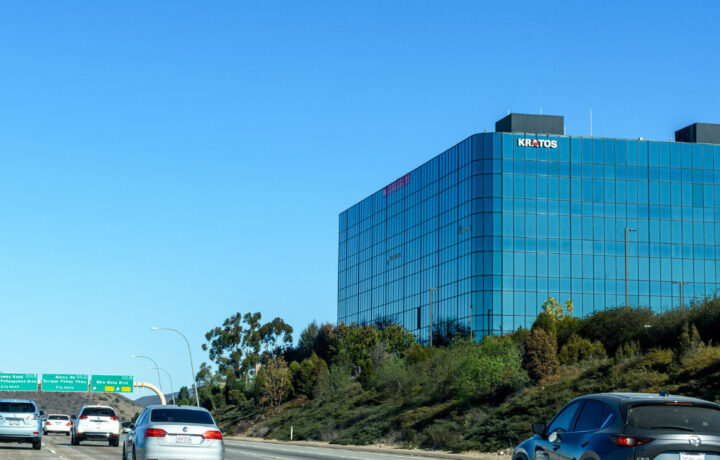Kratos (KTOS), a leading drone maker, is benefiting from the impressive attributes of the drones that it’s currently marketing and looks poised to get a big lift from the hypersonic drones that it has developed.
The company has two very strong, impressive partnerships. Finally, it does not appear to be highly leveraged to Ukraine, so its revenue is unlikely to suddenly plunge if the latter conflict comes to an end.
Given all of these points, I believe that growth investors looking for names within the defense sector to buy should consider purchasing KTOS stock.
Kratos’ Impressive Current Drones and Its Upcoming Hypersonic Drones
Last November, the U.S. Air Force, based on tests that it conducted, learned that Kratos’ Valkyrie drones can work in tandem with two manned F-35A planes. According to Interesting Engineering, the Valkyrie aircraft, which “can be operated autonomously or controlled directly by an F-35A pilot,” upgrades the latter planes’ “mission flexibility and operational range.”
The publication added that “The Valkyrie’s low cost enhances the Air Force’s ability to execute more daring missions without endangering human pilots.” The drone’s ability to fly autonomously and to coordinate with jets suggest that it is equipped with extremely advanced AI.
Additionally, the company markets drones that can fly over 45,000 feet above sea level, and travel more than 3,000 miles while weighing over 6,000 pounds. What’s more, the drones can launch medium-range air-to-air missiles and don’t need runways. Also noteworthy is that Kratos has successfully worked to reduce the cost of its drones over the years.
And indicating that the demand for its drones is strong and growing rapidly, the revenue of its unmanned-systems unit climbed 6.2%, excluding acquisitions, in the first quarter to $63.1 million. Also boding well for the company’s outlook, its bookings for the 12 months that ended on March 30 came in at $1.4 billion. Those bookings increased its overall backlog to $1.5 billion on March 30 from $1`.445 billion on December 29, 2024.
Speaking on KTOS’ Q1 earnings call which was held on May 7, CEO Eric DeMarco noted that the company had begun producing two types of hypersonic drones which are known as Aeronis and Dark Fury. DeMarco suggested that the latter drone, which has successfully flown at hypersonic speed, offers “incredible…speed, range, and precision” while selling at an “extremely low cost point.” DeMarco added that KTOS expects the revenue generated by its hypersonic products to increase meaningfully starting ” later this year and accelerating into 2026.”
According to multiple reports, hypersonic drones will be more effective at attacking long-range targets than current drones, while hypersonic drones will also be meaningfully more difficult for opposing enemies to successfully attack.
Given Kratos’ early-mover status in this area and the apparent low price points of its hypersonic drones, these products should be a tremendous growth engine for the firm in the medium-to-long term.
Needle-Moving Partnerships
KTOS is working with General Electric (GE) on the development of engines for drones, and KTOS is collaborating with Israeli state-owned weapons maker Rafael on the development of motors for rockets. Both GE and Rafael are powerhouses and are extremely well-connected to some of the world’s largest militaries. Providing evidence for that assertion, GE notes that it sells engines for ” two-thirds of all U.S. military combat and helicopter fleets,” while Rafael has an order backlog of $17.75 billion, sells products to more than 20 NATO countries, and was the co-inventor of Iron Dome, the highly successful anti-missile system used by Israel.
And suggesting that Kratos can help develop highly effective drone engines, GE and KTOS started collaborating on a second engine after they initially focused on on one such product, they recently announced. Additionally, GE agreed in June to formalize its partnership with KTOS after signing a memorandum of understanding with the smaller firm on the matter last year, suggesting that GE is very pleased with Kratos’ work.
No Indication of High Ukraine Exposure and the Bottom Line on KTOS
I did not find any indication that Kratos obtains a significant portion of its revenue from Ukraine, and the country was not mentioned on the company’s last earnings call. Therefore, it appears that KTOS does not have a great deal of exposure to the country. As a result, the shares are unlikely to fall sharply if the efforts to obtain a peace deal between Ukraine and Russia succeed.
KTOS has a very high forward price-to-earnings ratio of 76 times. However, analysts, on average, expect its earnings per share to surge to 72 cents in 2026 from 51 cents this year, and the company has a number of very promising initiatives. Also importantly, the shares do not appear to be at high risk of falling sharply if the Ukraine War ends. As a result of these points, KTOS stock appears to be a good choice for growth investors, even though it is trading at a high valuation.
*This article is intended to be informational only; it is not financial advice.




